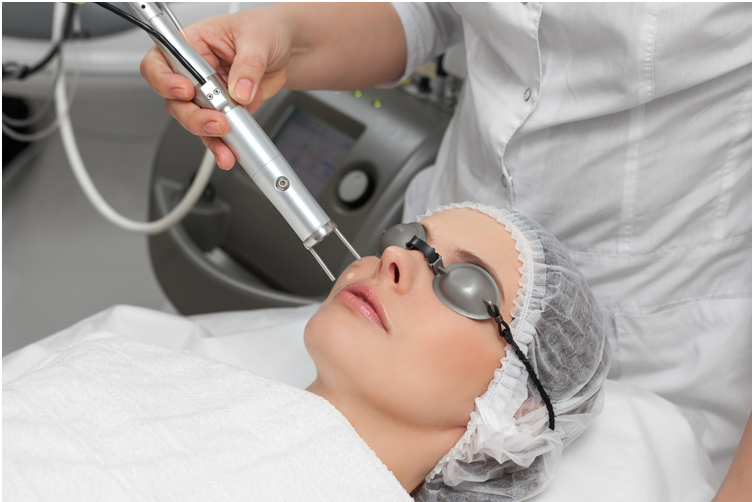Share

LASER RESURFACING
By Victoria Healthcare 12 April 2019

Laser resurfacing is a treatment to reduce facial wrinkles and skin irregularities, such as blemishes or acne scars.
The technique directs short, concentrated pulsating beams of light at irregular skin, precisely removing skin thin layer by layer. This popular procedure is also called lasabrasion, laser peel, or laser vaporization.
Who Is a Good Candidate For Laser Resurfacing?
If you have fine lines or wrinkles around your eyes or mouth or on your forehead, shallow scars from acne, or non-responsive skin after a facelift, then you may be a good candidate for laser skin resurfacing.
If you have acne or if you have very dark skin, you may not be a candidate, as it can remove the cells that produce pigmentation. This technique is also not recommended for stretch marks. You should discuss whether laser resurfacing is right for you by consulting with the doctor before having the procedure done.
How Does Laser Skin Resurfacing Work?
The two types of lasers most commonly used in laser resurfacing are carbon dioxide (CO2) and erbium. Each laser vaporizes skin cells damaged at the surface-level.
CO2 Laser Resurfacing
This method has been used for years to treat different skin issues, including wrinkles, scars, warts, enlarged oil glands on the nose, and other conditions.
The newest version of CO2 laser resurfacing (fractionated CO2) uses very short pulsed light energy (known as ultrapulse) or continuous light beams that are delivered in a scanning pattern to remove thin layers of skin with minimal heat damage. Recovery takes up to two weeks.
Erbium Laser Resurfacing
Erbium laser resurfacing is designed to remove surface-level and moderately deep lines and wrinkles on the face, hands, neck, or chest. One of the benefits of erbium laser resurfacing is minimal burning of surrounding tissue. This laser causes fewer side effects -- such as swelling, bruising, and redness -- so your recovery time should be faster than with CO2 laser resurfacing. In some cases, recovery may only take one week Ask your doctor how long recovery is likely to take for you.
If you have a darker skin tone?, erbium laser resurfacing may work better for you.
Preparing for Laser Resurfacing
Start by consulting a plastic surgeon or dermatologist to find out if you're a good candidate. Be sure to choose a doctor who has documented training and experience in laser skin resurfacing. The doctor will determine which laser treatment is best for you after considering your medical history, current health, and desired results.
Tell the doctor if you get cold sores or fever blisters around your mouth. Laser skin resurfacing can trigger breakouts in people who are at risk.
If you decide to go ahead with laser skin resurfacing, your doctor will ask you to avoid taking any medications or supplements that can affect clotting -- such as aspirin, ibuprofen, or vitamin E -- for 10 days before surgery.
If you smoke, you should stop for two weeks before and after the procedure. Smoking can prolong healing.
Your doctor may prescribe an antibiotic beforehand to prevent bacterial infections and also an antiviral medication if you are prone to cold sores or fever blisters.
Complications of Laser Skin Resurfacing
Although skin resurfacing cannot produce perfect skin, it can improve the appearance of your skin. Potential risks of the procedure include:

- Burns or other injuries from the laser's heat
- Scarring
- Changes in the skin's pigmentation, including areas of darker or lighter skin
- Reactivating herpes cold sores
- Bacterial infection
Milia, which are small white bumps, may appear in the laser-treated areas during healing. Your doctor can treat those.


